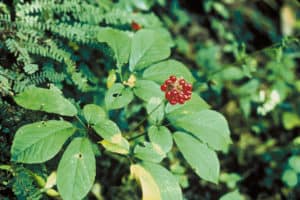
Common Chinese Herbs
At RiverWest Acupuncture in Portland, we provide more than acupuncture treatments for our patients. Our practitioners also practice the art of Chinese herbology, which has been passed down through generations for thousands of years. Chinese herbology, also referred to as Traditional Chinese Medicine, involves the use of up to 5,700 substances, mainly herbs but also other materials, to create medicinal combinations that treat any number of ailments. At RiverWest Acupuncture in Portland, we use several of the main 1,800 herbs used in Chinese pharmacopeia to treat our patients. Due to the quantity and types, these herbs are delivered via teas, granules, patents, and tinctures. Hence, this blog looks at four common chines herbs.
Often, our clients express curiosity about the kinds of herbs we utilize here at RiverWest Acupuncture in Portland, and the individualized functions of each of the herbs. Though our practitioners are familiar with most of the 1,800 herbs, it can be tedious to describe every single herb we use and their specific attributes and effects. However, of the herbs we use, there are several that are considered fundamentals, or staples of TCM. From this grouping, here are four of the main herbs often used in Chinese herbology to encourage healing.
Ginseng
1. Species: Panax ginseng
Pinyin: Ren Shen
Quality: Sweet, Bitter, Warm
Meridians: Lung, Spleen, Heart
Actions: tonifies yuan qi, tonifies spleen and lung, generate fluids
2. Species: Elutherococcus senticosus
Pinyin: Ci Wu Jia
Quality: Pungent, Slightly Bitter, Warm
Meridians: Spleen, Heart, Kidney
Actions: tonifies spleen and kidney, mildly tonifies heart qi, promotes blood circulation
3. Species: Panax quinquefolius
Pinyin: Xi Yang Shen
Quality: Sweet, Slightly Bitter, Cold
Meridians: Heart, Kidney, Lung
Actions: tonifies lung and spleen qi, tonifies lung yin, and generates fluids.
The ginseng root has long been praised as a disease-preventive, and has been used for well over two thousand years. Furthermore, Ginseng has been attributed with calming the spirit yet nourishing the viscera. In addition, other usages for ginseng have included normalizing blood pressure, regulating blood sugar, resisting fatigue, and enhancing the immune system. Ginseng comes in two forms, red and white, with color depending on how the ginseng was processed. White ginseng is unprocessed and dries naturally, while red ginseng is processed with steam. Excessive consumption of ginseng can lead to nervousness and in addition, may cause some hormonal imbalance.
Licorice
Species: Glycyrrhiza inflate
Pinyin: Gan Cao
Quality: Sweet, Neutral
Meridians: all twelve channels, but mainly Heart, Lung, Spleen, and Stomach
Actions: tonifies spleen qi, moistens lungs for dry cough, clears heat, tonifies heart qi, alleviates spasmodic pain, antidote for toxicity, moderates the effects of more harsh herbs
The roots of the licorice plant are used to treat a number of illnesses including hepatitis, sore throat, and spasms. The root has an extremely sweet taste, and therefore, has been used to assist in digestion and healing stomach ulcers. When baked with honey, licorice is also used to treat hyperthyroidism and heart valve disease. Traditionally, licorice was thought to not only enhance the effectiveness of other herbs, but moderate the effects and flavors of more bitter herbal formulas. Therefore, licorice is often added to many herbal treatments as a balancing agent. Excessive consumption of licorice over time can cause a sodium imbalance.
Salvia
Species: Salvia miltiorrhiza
Pinyin: Dan Shen
Qualities: Bitter, Cool
Meridians: Heart, Pericardium, Liver
Actions: invigorates blood, regulates menstruation, clears heat, and soothes irritability
The deep roots of this Chinese sage plant have been used considerably to treat a number of conditions. Salvia is often used in cases where body tissues have been damaged by disease such as in the case of traumatic injury, chronic inflammation, and degenerative diseases. In addition, this herb can help promote circulation and is sometimes used to regulate menstruation. Salvia is also used to lower blood pressure, help reduce cholesterol, and aid the functions of the liver.
Salvia is more commonly known as sage. While this particular species of salvia miltiorrhiza common name is Red Sage, there are a variety of sages. Subsequently, we are more accustomed to salvia officinalis or commonly know as, Purple sage. Here in Portland, we get our from Joy Creek Nursery.
Rhubarb
Species: Rheum palmatum
Pinyin: Da Huang
Quality: Bitter, Cold
Meridians: Heart, Large Intestine, Liver, Stomach
Actions: purges accumulation, cools and invigorates blood
The large root of this plant is used for medicinal purposes and was one of the first herbs to be imported from China. More specifically, rhubarb is used as a reliable laxative. In addition, rhubarb’s benefits included promoting blood circulation, relieving pain caused by injury, and prevention of intestinal infection. Cooking rhubarb will reduce its laxative properties while retaining its other healing qualities. Rhubarb is not suggested for those with irritable bowels, as it may cause diarrhea.
If you seek more information about our use of herbs or what an herbal treatment can do for you, contact RiverWest Acupuncture in Portland, Oregon. We not only carry an extensive knowledge and collection of herbs, but also provide herbal treatments, consultation, and of course, acupuncture for many clients in Portland. Come to us, and see how the traditional practice of Chinese herbology can help you find healin
Ready for treatment?
Call 503-246-0103 to schedule an appointment.
Have a question?
To submit an inquiry to one of our professionals, email us at contact@riverwestacupuncture.com.Have a question about acupuncture or some of our other services? Send us your question and we’ll get back to you shortly with a reply!
